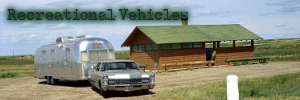















RV Tips for Keeping Your RV Mold and Mildew Free |
|---|

|
Adam O'Connor
August 10, 2006
For RV'ers, nothing is more enchanting than a long road trip with many sights to see along the way. However, nothing can be more frustrating than having problems with your vehicle while on the road trying to have fun. Especially if those problems involve water leaking into your RV while your out touring the rainy Pacific Northwest or flooding from a leaky toilet or sink. Although mold can form while you out on the road, most mold and mildew formation occurs during those months when it is in storage. Under a tarp or stored in a warm, humid storage facility, your RV could become an incubator for mold and mildew. To follow are 3 tips for preventing mold and mildew from forming in your RV.
Check Your Plumbing and Ventilation
Every time you leave for one of your RV adventure, check or hire someone to check your toilet valves, lines, and your RV toilet stop to ensure it is all working correctly. Make sure your bathroom is vented properly because poor ventilation in small spaces with ample water is a perfect place for mold to grow. Don't forget to have someone look at the plumbing under your sinks and your waiste disposal system. The last thing you need is a leaky toilet or sink supply line soaking your carpet while you're blissfully charging down the road to that next destination.
Keep Tabs on Your Roof and Ceiling
Make sure your roof is water tight by inspecting the caulking, moulding and seams. Examine your roof carefully at least twice a year for exposed fasteners, cracked seams, UV deterioration, mold and mildew, water spots on the ceiling. One clear indicator for RV roof deterioration is a chalky white substance left in your driveway when you wash your RV. If you are a "do-it-yourself-er" (DIY-er), you could start by spraying water and trying to determine the source of the leak, replacing leaky roof vents, removing old caulking and replacing it with new, and repairing damaged seams. If your roof is in need of repair and you are not a DIY-er you may want to try a liquid roof system with no chalk, seams, or leaks. One highly recommended product is MobilRoof and you can call them at 1-866-MobilRoof.
Prevent Mold from Forming During Storage
Store your travel vehicle under a cover that will protect it from the elements while allowing it to breathe , while venting inside water vapor to prevent mold, mildew from forming. One can find a whole host of RV covers that are triple - layered to provide ample UV protection, air vents to reduce wind lofting and inside moisture for around $300.00 with a 3-year warranty.
Check for Hidden Mold and Clean it Up
Sometimes mold clean up requires some good detective work where you will have to learn to "follow your nose". Follow the smell and feel around for dampness. Even when mold is not visible on carpets and walls it may be growing on carpet padding or inside walls. Inspect, or have inspected, your air conditioning system ducts for mold, dampness. Once mold spores form in a heating or AC system, they will be spread around the entire space. This could cause some major health problems. For more on how to located mold and remove it, read this >>.
Article by: Adam O'Connor, Water Damage Pro
Source: Amazines.com
